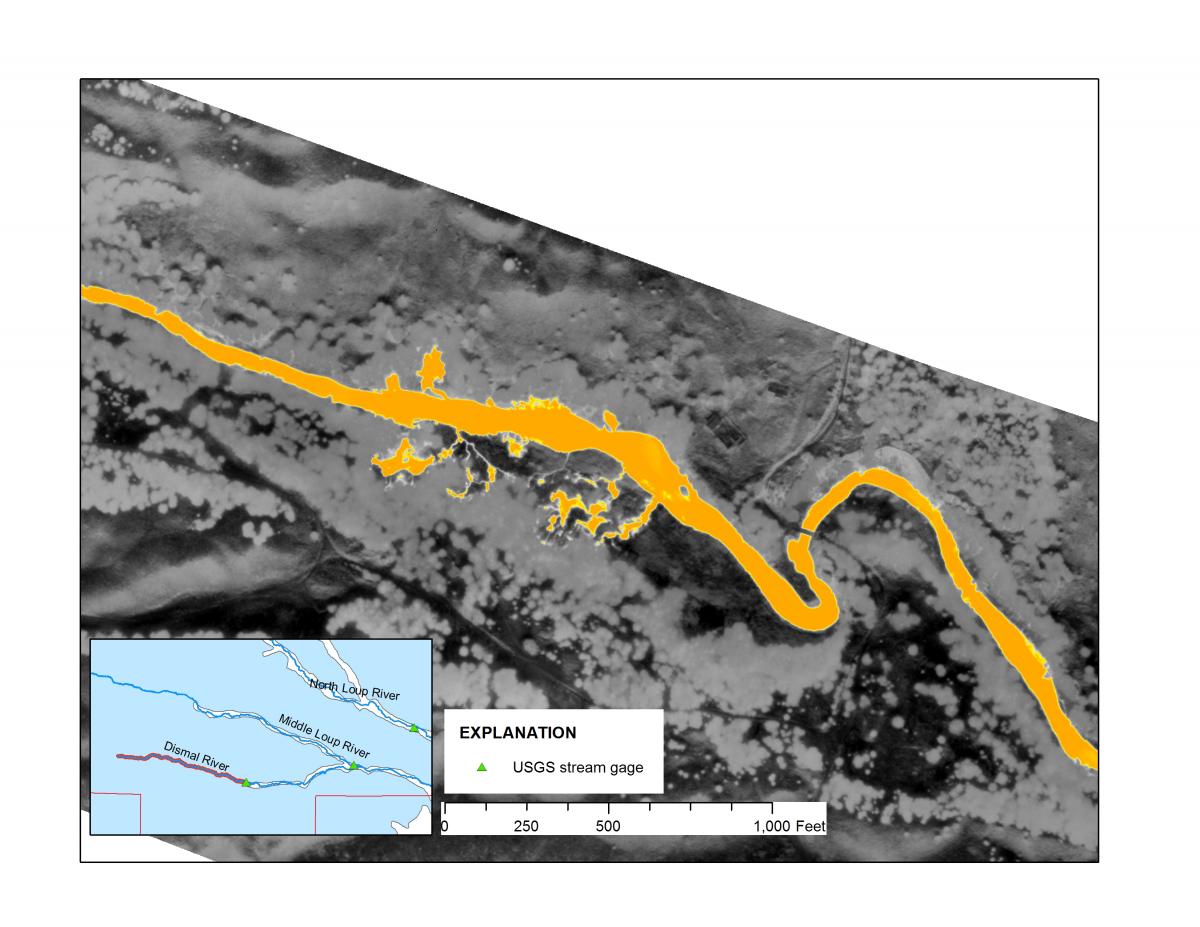Streams in the Loup River Basin in the Sand Hills of Nebraska are sensitive to groundwater withdrawals because of the close hydrologic connection between groundwater and surface water. Groundwater discharge constitutes over 90% of streamflow in the Loup River Basin. The Upper and Lower Loup Natural Resources Districts, in cooperation with the USGS, received a grant from the Nebraska Environmental Trust to study the temporal and spatial characteristics of surface water/groundwater interaction within the basin. Four stream reaches, totaling approximately 320 river miles, have been identified by the Upper and Lower Loup Natural Resources Districts as priority reaches where additional information is needed. Currently, groundwater discharge is estimated from suveys completed in 2006, where streamflow was measured by conducting seepage runs at various points along a stream’s reach, often up to 15 miles apart. However, streams in the Loup River Basin are known to receive substantial inflows from focused discharge, or groundwater discharged from springs. Furthermore, the influence of various climatic and land use changes on groundwater discharge patterns is unknown. This is the first study to sytematically map these areas of focused groundwater discharge and examine impacts of climate and land use change.
During fall 2015, airborne infrared imagery was collected over the two stream reaches prior to ice up. During that time, warmer thermal anomalies in stream-surface temperatures are indicative of focused groundwater discharge. Early results indicate zones of focused groundwater discharge were detected along the Dismal, the North Fork of the South Loup, and the upper South Loup Rivers. Most areas of focused groundwater discharge were typically small (less than 0.1 ft3 per second); however, some discharge points on the Dismal River exceeded 2 ft3 per second. A zone of focused groundwater discharge was detected downstream of the USGS streamgage at Arnold. Here, the South Loup River incises into Pliocene-age gravel deposits and over a 15-mile reach where the additional groundwater discharge increases streamflow more than a factor of two. Along this reach, a thermograph collected from a self-logging temperature sensor prior to ice up was shifted toward higher temperatures when compared to thermographs from other stream reaches, indicating groundwater discharge constituted a higher proportion of total streamflow.
http://ne.water.usgs.gov/projects/GWSWInteraction/index.html

Aerial thermal image of the Dismal River above the streamgage near Thedford, Nebraska.

